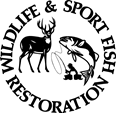Lake Corpus Christi 2022 Survey Report
If you have difficulty accessing the information in this document, contact the TPWD Inland Fisheries Division for assistance.
Lake Corpus Christi - 2022 Survey Report
Prepared by Greg Binion and Dusty McDonald
Inland Fisheries Division - Corpus Christi District
This is the authors' summary from a 41-page report. For a copy of the complete report, use the download link in the sidebar.
Fish populations in Lake Corpus Christi were surveyed in 2022 using electrofishing and in 2023 using gill netting to assess population trends for important sport fishes. Anglers were surveyed from March through May 2023. Historical data are presented with the 2022-2023 data for comparison. White Bass were assessed in upstream Nueces River in 2022-2023 with winter electrofishing. This report summarizes the survey results and contains a management plan for the reservoir based on those findings.
Reservoir Description
Lake Corpus Christi is an 18,256-acre impoundment located on the Nueces River approximately 20 miles northwest of Corpus Christi, Texas. The reservoir was built by the Lower Nueces Water Supply District in 1958 to provide water for the city of Corpus Christi and other coastal bend communities and is under the authority of the City of Corpus Christi. Boat access is correlated with water level. Shoreline and handicap access are limited to a few public areas around the lake. Water is typically turbid but clears during summer in the lower reservoir and small creek arms. The substrate is composed primarily of silt, sand, clay, and some gravel/rock. Littoral habitat consisted of flooded live and dead terrestrial vegetation, standing timber, and seasonally abundant water hyacinth.
Management History
Important sport fish species include Blue and Channel catfish, White Bass, Largemouth Bass, Alligator Gar, and crappie. Recent management efforts focused on increasing FLMB introgression through Florida Largemouth Bass stockings (2019 and 2020) and Lone Star Bass (2022), developing and implementing a sampling protocol to track population trends of White Bass in the upstream Nueces River, and evaluating the use of baited tandem hoop nets as a sampling gear for Channel Catfish. Further, staff conducts annual surveys that are specific to the expansion of nuisance vegetation. Water hyacinth was treated by spot-herbicide applications in 2019 (500 acres), 2020 (750 acres), 2021 (250 acres) and 2022 (300 acres) by either private contractors or City staff. Angler harvest of all sport fishes has been regulated according to statewide size and bag limits.
Fish Community
- Prey species: Threadfin and Gizzard Shad formed the reservoirs forage base, increasing in recent years. Bluegill provided additional forage for sport fish and increased in 2022. The population size structure of prey species was suitable to support sport fish populations.
- Catfishes: In 2023, catfish were the most sought-after species, comprising over 37% of total angling effort and anglers harvested similar numbers of Blue Catfish and Channel Catfish. Blue Catfish were the predominant species, but in lower abundance from previous years, however size structure was comprised of a wide size range of healthy fish. Channel Catfish have been available historically in very low abundance. Flathead Catfish were present in the reservoir.
- White Bass: White Bass supports a popular fishery in the upstream Nueces River. White Bass were available in high abundance and 98% of fish collected were available for angler harvest.
- Largemouth Bass: Largemouth Bass abundance has increased in the last four years. However, few legal-size fish were available to anglers. Growth was adequate and consistent with previous surveys. In 2023, interest in Largemouth Bass angling was low only accounting for 6.3% of the total angling effort occurring in the reservoir.
Management Strategies
- Continue to manage sport fish under existing regulations.
- Identify and explore partnerships and grant opportunities to conduct a fisheries habitat enhancement project.
- Monitor expansion of nuisance vegetation.
- Continue to track population trends and monitor harvest through creel surveys and the mandatory Alligator Gar harvest reporting system.

Performance Report as required by Federal Aid in Sport Fish Restoration Act Texas Federal Aid Project F-221-M-5 Inland Fisheries Division Monitoring and Management Program